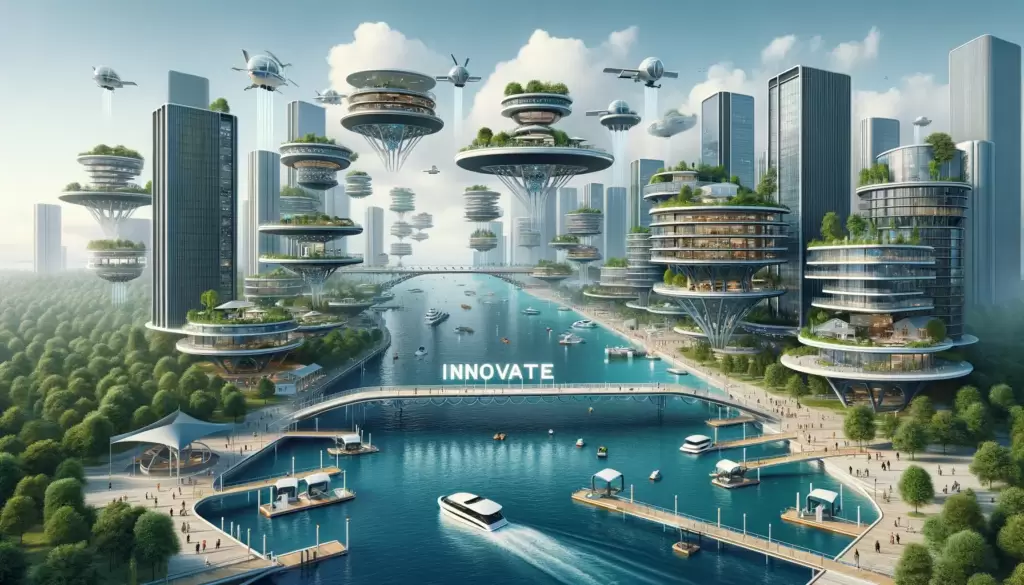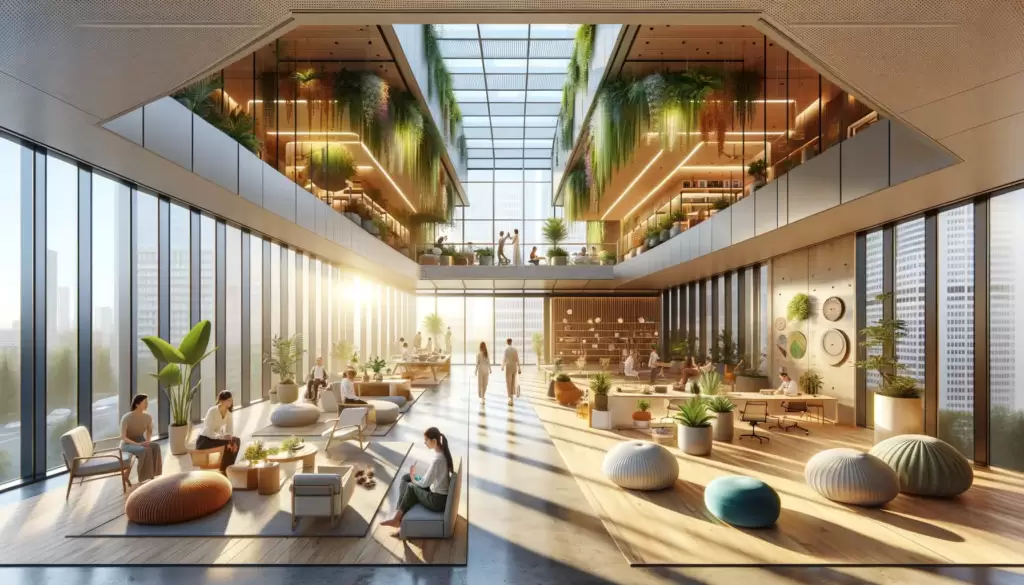
Table of Contents
1. Introduction: Exploring Floating Architecture Concepts
The concept of Floating Architecture Concepts has long captivated architects and designers, offering a unique blend of innovation, sustainability, and creative possibilities. By utilizing water as a foundation for construction, floating architecture enables structures to adapt to changing water levels, offering resilience in the face of environmental uncertainties. This opens up new frontiers for urban development and sustainable design, with the potential to address issues such as overcrowding in cities and the need for flexible infrastructure.
One fascinating aspect of floating architecture is its inherent relationship with nature. Instead of imposing structures onto the natural environment, floating architecture seeks to harmonize with it. This approach encourages a deeper understanding of local ecosystems and forces designers to rethink traditional construction methods. In doing so, floating architecture not only offers practical solutions but also presents an opportunity to reconnect with our surroundings in a more sustainable way.
2. Understanding the Benefits of Floating Architecture
Innovating with floating architecture offers a myriad of benefits that extend beyond the traditional realms of construction. From environmental sustainability to urban congestion mitigation, floating structures provide unique solutions to contemporary challenges. By building on water, architects can preserve land for agricultural and recreational purposes, minimizing the impact on delicate ecosystems. Additionally, these designs promote flexible and adaptable spaces that can respond to changing sea levels and accommodate urban population growth. This adaptability fosters future-proofed communities that can withstand environmental changes with resilience and grace.
Beyond their practical advantages, floating architectures also evoke a sense of tranquility and unity with nature. They offer an opportunity for individuals to connect deeply with bodies of water, instilling a profound appreciation for the environment within urban environments. The aesthetic appeal of floating structures cannot be overstated; they often serve as breathtaking tourist attractions while simultaneously contributing to sustainable development goals. Ultimately, embracing the potential of floating architecture allows us to reimagine our relationship with water, reinventing how we conceive and interact with coastal areas while fostering innovative solutions for future generations.
3. Integrating Sustainability in Floating Architecture
Integrating sustainability in floating architecture is more than just a trend – it’s an essential consideration for innovative design. By leveraging renewable energy sources such as solar and wind power, floating architecture can significantly reduce its environmental impact while maximizing self-sufficiency. Additionally, incorporating green spaces and natural elements into these structures not only enhances the aesthetic appeal but also contributes to improved air quality and biodiversity in urban waterfront areas.
Furthermore, using eco-friendly building materials and implementing efficient waste management systems are crucial steps towards making floating architecture sustainable. Choosing materials that have minimal environmental impact and can withstand harsh marine conditions is paramount for ensuring the longevity of these structures. Moreover, designing for disassembly and recycling at the end of a structure’s life cycle can minimize waste generation and promote a circular economy within the realm of floating architecture. Overall, sustainability should be at the forefront of all innovative concepts in floating architecture to ensure long-term ecological viability alongside functional brilliance.
4. Design Principles for Innovative Floating Structures
Innovative floating structures require a thoughtful approach to design principles that combine functionality, sustainability, and aesthetics. The first principle is adaptability, as floating structures need to be designed to withstand changing water levels, climate conditions, and usage requirements. Flexibility in design allows for versatile use of space and ensures the structure can accommodate different purposes over time.
Another crucial principle is integration with the natural environment. Sustainable materials and green technologies should be utilized to minimize the ecological impact of floating structures. Embracing the surrounding ecosystem not only enhances the structure’s resilience but also creates a harmonious relationship between human-made architecture and nature. Additionally, considering local cultural and historical contexts can add depth and significance to innovative floating designs, enriching their value beyond functionality alone.
These design principles challenge architects and engineers to think innovatively in creating resilient yet aesthetically pleasing structures that integrate with their surroundings while meeting diverse user needs. By embracing adaptability, sustainability, and integration with nature, there is potential for groundbreaking advancements in floating architecture concepts that mirror the dynamic interplay between water environments and human ingenuity.
5. Overcoming Challenges in Implementing Floating Architecture
Implementing floating architecture comes with its unique set of challenges, but overcoming these obstacles may pave the way for revolutionary innovations in urban development. One primary challenge is the engineering aspect, as building structures to withstand the forces of water and weather requires cutting-edge technology and materials. Additionally, navigating through complex regulations and policies related to water usage and environmental impact assessment can be a significant hurdle for floating architecture projects.
Moreover, integrating sustainable design with floating architecture presents its own set of challenges. Finding ways to minimize disruption to marine ecosystems and reducing carbon footprints during construction are crucial aspects that demand creative solutions. Despite these obstacles, proponents of floating architecture are embracing these challenges as opportunities for pushing boundaries in architectural innovation and creating more resilient cities that adapt to changing environments. By addressing these hurdles head-on, designers and engineers are not only pioneering new construction methods but also redefining our relationship with water as a foundational element of urban living.
6. Case Studies: Successful Applications of Floating Architecture
The successful applications of floating architecture have not only revolutionized the traditional concept of urban development but have also set a new standard for sustainable and innovative design. One inspiring case study is the Floating Seahorse project in Dubai, which offers luxurious underwater living experiences while promoting marine conservation efforts. The integration of renewable energy technologies and eco-friendly materials has allowed these floating homes to exist harmoniously with their surroundings, challenging the conventional notions of urbanization and environmental impact.
Another compelling example is the Swim City initiative in Switzerland, where floating structures serve as vibrant community spaces and residential areas on water bodies. These innovative designs not only demonstrate an efficient use of limited land resources but also prioritize resilience against rising sea levels due to climate change. By showcasing how adaptable and functional floating architecture can be, these case studies inspire further exploration of unconventional solutions for future urban planning challenges. With each successful application, floating architecture continues to prove itself as an influential force in redefining our relationship with water and addressing the changing needs of our built environments.
7. Conclusion: Embracing Innovation in Floating Architecture
In conclusion, embracing innovation in floating architecture presents an exciting opportunity to revolutionize the way we design and build structures. The potential for sustainability, adaptability, and creative freedom in floating architecture is immense, offering a unique solution to urban challenges and environmental concerns. By leveraging cutting-edge materials, technologies, and design principles, architects and engineers can push the boundaries of what is possible in this burgeoning field.
As we look towards the future, it’s clear that embracing innovation in floating architecture will not only transform our built environment but also redefine our relationship with waterways and natural landscapes. Embracing a mindset of constant improvement and forward thinking will be crucial as we navigate the opportunities and challenges presented by this innovative approach to construction. By actively engaging with new ideas and pushing for collaborative research and development efforts, we have the chance to shape a more sustainable, resilient future through the power of floating architecture.




